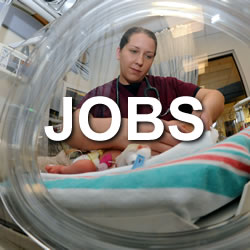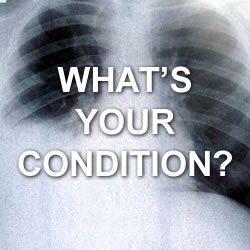Medical Helicopters - Are They Worth the Risk?
Susan Brissette | Insider

image by: Michael D. Camphin
Medical transport by air remains controversial primarily because of its cost and safety record. Do medical helos really make a difference?
If you have a medical emergency you may find yourself being airlifted to a location where there are specialized medical services. At first blush, this rapid transport sounds like one more excellent advance in emergency medical care.
But some are critical of emergency medical helicopters, pointing out the number of accidents that have taken place and calling into question the very high cost of air transportation. Is medical transport by medical helos safe? Does the service bring enough value, such as better patient outcomes, to justify the cost?
Approximately 550,000 patients in the United States are flown by medical helicopters and small airplanes for emergencies that include car wrecks, hiking accidents and heart attacks, according to the Association of Air Medical Services. Nearly 1,200 aircraft operate from more than 830 bases with about half run by hospitals and half run as stand-alone community services.1
Medical transport by air originated with the military back in the 1920's when patients were airlifted from Nicaragua to an Army hospital in Panama, 150 miles away. However, planes were not routinely used for evacuation and transport until World War II and helicopters were introduced during the Korean War in the 1950s, aka MASH. When the Army encountered poor roads and conditions, they began re-routing helicopters from other missions to pick up the critically wounded and fly them quickly and smoothly to field surgical units, often saving lives and limbs.
Over the course of the conflict, the military developed helicopters dedicated to medical transport, the start of today’s HEMS, Helicopter Emergency Medical Service. This new approach was credited with reducing the mortality rate for wounded soldiers. The Vietnam War provided another opportunity to expand and improve air medical transport as over 800,000 troops were evacuated from the field to emergency facilities.2
In the 1960's the National Academy of Science urged that helicopters be adopted for civilian emergency rescue. The first service was established in Denver, Colorado in 1972. HEMS has grown rapidly since then, partly as a way for hospitals to increase their visibility and admissions and partly in response to changes in the healthcare system.
For example, the closure of rural hospitals has created gaps in the availability of specialized emergency medical care. And, as more time-dependent medical treatments have been shown to improve patient outcomes, such as “clot-busting” drugs, angioplasty and trauma surgery, the need to deliver patients to advanced medical care facilities has grown.
Are Medical Helicopters effective?
It’s difficult to look at the effectiveness of air medical transport without dealing with factors such as the appropriateness of using this expensive method of transport in the first place. Many research studies have shown that there is no significant change in the outcome of patients transported by helicopter over those that were ground transported (GEMS).This apparent lack of effectiveness may have a lot to do with the number of people who didn’t actually need to be air transported.3
Meta analysis in 2006 discovered that the majority (almost 70%) of trauma patients transported from the scene by helicopter had nonlife-threatening injuries. And, in a detailed study of 162,730 patients treated at 28 accredited trauma centers in Pennsylvania from 1987--1995, researchers found that transportation by helicopter did not affect the estimated odds of survival but like other studies, it did not sort cases based on severity or appropriateness.4,5
So, why have the studies indicated that overall medical helicopters are just as effective as keeping your feet on the ground?
Over – triage appears to be the main factor. Experts say that in order to capture all potentially serious emergencies there has to be some level of over-triage. The “acceptable” rate has been established at between 30-50%. If the over-triage rate is too low, then there is an unacceptably high rate of “under-triage,” meaning that the field personnel did not identify victims who later proved to have major injuries.
The message is, it’s difficult to evaluate the current studies. Consequently, while helicopter transport may be extremely valuable for seriously ill or injured patients, the value of helicopter transport is hard to judge because there are so many non-serious patients being transported. However, one group that is in a good position to make judgments, medical directors of emergency departments, believe that managed correctly, medical air transport does save lives.6,7
Why does medical transport by air cost so much?
The cost of an emergency helicopter trip varies widely and there’s no national reporting system for fees so pricing data is hard to find. Craig M. Yale, vice president of corporate development for Air Methods Corp., says that fees can range from less than $12,000 to as much as $25,000 per flight.8
Although some believe that the high cost of air medical transport has to do with price gouging (which could be true but is hard to prove), there are definitely legitimate reasons for the high costs. The multimillion dollar helicopters are only one factor in the total cost. And although a flight can consume thousands of dollars in fuel, one of the biggest cost factors is regular maintenance and the need to have twenty-four hour a day, 365 day week availability.
Each air medical flight crew usually consists of three highly trained professionals including the pilot, flight nurse, and paramedic. Because the plane and crew must be available at a moment’s notice, much of the cost of providing these services is in the capacity to respond and not the actual cost of the individual flight. Plus, all of these costs are divided between a very few calls per day, resulting in a very high cost for each call.
On the other hand, ground ambulances are generally much less expensive, with an average emergency run coming in at $800 to $2,000, depending on the region and other factors, according to J.D. Fuiten, secretary of the American Ambulance Association.
Is air transport safe?
Air medical transport has had many accidents and compounding this issue, the emergency medical helicopter industry has less strict flight safety regulations than the civilian airline industry. In 2008, 29 people died in 13 medical helicopter crashes across the country in what was the worst year on record for air ambulance safety. In 2009, six people died in two helicopter crashes. In 2010, 21 people died in crashes. The value of reducing the time it takes to get a seriously injured person to medical care is wiped out if an accident occurs during transport.9,10
In response, the Federal Aviation Administration (FAA) proposed new safety and training requirements for pilots of emergency medical helicopters in the fall of 2010 including stricter procedures for flying in challenging weather, at night and in remote landing areas as well as installation of a terrain warning system like those on board passenger airplanes.11
However, these proposals do not fully embrace the changes recommended by the National Transportation and Safety Board (NTSB) which investigates accidents and makes recommendations. This safety watchdog group advocates the use of night-vision goggles and installation of an autopilot program on medical helicopters.12
Is emergency medical transport by air worth the cost and safety risks?
Whether or not air medical transport is worth the risk certainly depends on who’s asking the question.
- If your life has just been saved by being airlifted to a high tech medical center, you probably feel that the service is priceless.
- If you were airlifted as a result of over-triage and face a $25,000 bill that your health insurer won’t pay, you are likely to be less enthusiastic.
- If you are an insurer, policy analyst or regulator, your view is much more macro and encompasses the larger question of cost versus benefit. In one detailed study, researchers determined that HEMS had a cost per saved year-life of $2,500-$9,700 which compared very favorably to other accepted treatments such as coronary bypass ($23,000), clot busters for heart attack ($32,678), and low birth weight babies in a neonatal intensive care unit ($41,000).13,14
So, what’s the answer to make to make medical helicopters more safe and perhaps less costly.
- Implement FAA/NTSB recommendations across the industry. Regulatory and safety agencies agree that significant improvements are needed in air medical transport safety.
- Improve the triage criteria to reduce over-triage.
- Limit use of HEMS to areas where there is a true time savings. Medical helicopter services should be distributed in a more rational, regional way rather than the current competitive approach which inevitably leads to duplication, poor placement and pressure to over utilize. Many HEMS are located in urban areas, owned by urban hospitals. Although it might be argued that even a short distance can take a long time when traveling on congested roadways, urban areas tend to have paramedics riding in well equipped ambulances so that it’s much more possible to treat and stabilize a patient in an urban setting as opposed to a rural setting where ambulance services are rarely able to support paramedic level care.
The Bottom Line
While some of the controversy surrounding medical helos is justified and the benefits are not without caveats, many people do benefit. However, it behooves this rapidly expanding industry to improve its safety record at the least.
In the meantime, minimize your risk. Keep your feet on the ground, especially in urban areas.
References
- Atlas & Database of Air Medical Services (ADAMS), Association of Air Medical Services
- Air Medicine: Accessing the Future of Health Care, Foundation for Air-Medical Research and Education (FARE), 2006
- Bledsoe B, EMS Myth #6: Air medical helicopters save lives and are cost-effective, EMS World, December 1, 2003
- Bledsoe BE et al, Helicopter scene transport of patients with non-life threatening injuries: a Meta analysis, J Trauma. 2006 Jun;60(6):1257-65; discussion 1265-6
- Brathwaite CE et al, A critical analysis of on-scene helicopter transport on survival in a statewide trauma system, J Trauma 45(1):140--144, 1998
- Lemonick D, Controversies in Prehospital Care, American Journal of Clinical Medicine, Winter 2009
- Guidelines for Air Medical Dispatch, Policy Resource and Education Paper, American College of Emergency Physicians and National Association of EMS Physicians
- AirMethods
- Uken C, Helicopter transport increases survival for seriously injured patients, Billing Gazette, January 16, 2011
- Lowy J, EMS Air Safety eyed after Arkansas Incident, Associated Press, September 1, 2010
- Press Release - FAA proposes Comprehensive New Helicopter Safety Rules, Federal Aviation Administration, October 7, 2010
- Four Safety Recommendation Letters Concerning Helicopter Emergency Medical Services, National Transportation Safety Board, September 1, 2009
- Aleccia J, Air Ambulances leaves some with sky-high bills, MSNBC, December 17, 2009
- Tengs TO et al, Five-Hundred Life-Saving Interventions and Their Cost-Effectiveness, Risk Analysis, Volume 15, Issue 3, pages 369–390, June 1995
Susan Brissette can be reached at SB Cass Associates [email protected]

Introducing Stitches!
Your Path to Meaningful Connections in the World of Health and Medicine
Connect, Collaborate, and Engage!
Coming Soon - Stitches, the innovative chat app from the creators of HWN. Join meaningful conversations on health and medical topics. Share text, images, and videos seamlessly. Connect directly within HWN's topic pages and articles.
















